The smallest black hole in the universe
They found that light could be needed just as much as food.
- Stephen King

When you look up and penetrate the depths of the night sky, you immediately remember that there is a whole Universe full of wonders. But in addition to meteors, planets, stars, nebulae and galaxies that illuminate the universe, there are other forms of matter that are completely invisible to our eyes.

')
And I'm not talking about cold gas and dust, invisible in the visible range. These objects are made of the same building blocks — protons, neutrons, electrons — as we do. And although they may not emit (or even absorb) visible light, if we observe at the desired wavelengths, we will see them.
When we send the best observatories to the “dark” dust streaks towards the center of the Galaxy, this is what we see:

And yet, even if we talk about normal matter — from which stars, planets, gas, dust, you and I are made — there are still sources that do not emit any light at any wavelengths. They cannot do this, because by definition nothing can escape from them.
I, of course, talking about black holes.
We know that these objects exist, not only theoretically, but also from observations. Just by looking at the central region of our galaxy, we can track the orbits of stars and find that they move around a central object that has a mass of four million solar, which, at the same time, does not emit light.

In fact, in the center of most galaxies are supermassive black holes, many of which are thousands of times heavier than the monster in the center of the Milky Way. They represent the largest of the black holes of the universe, and are formed, as is believed, by the merger and absorption of millions of ancient dead corpses of massive stars.
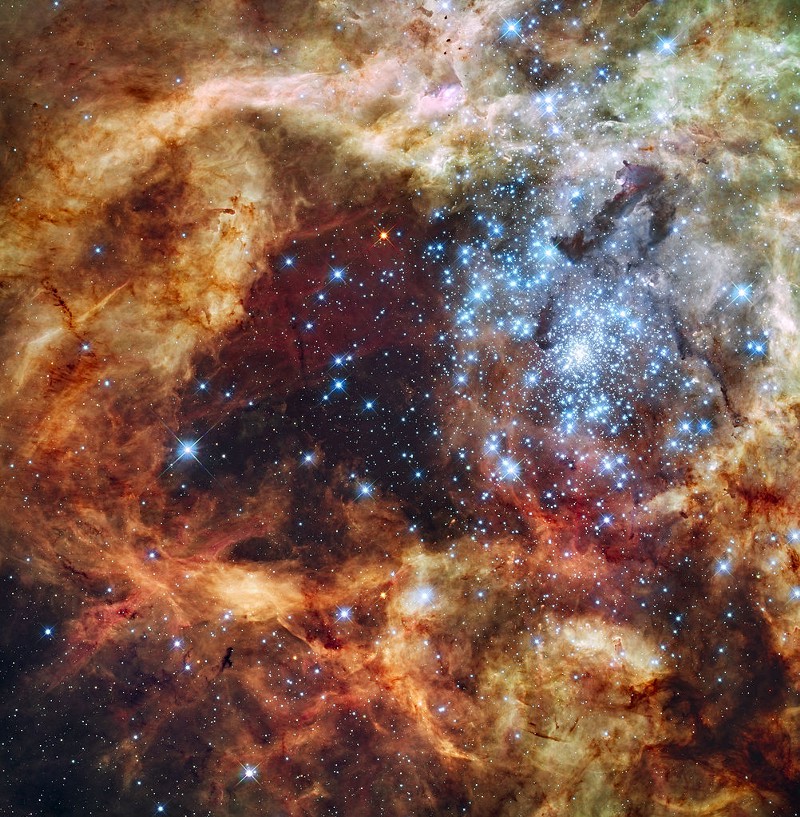
Of course, the brightest and largest, massive stars, it is easier to see, if you look at the young star cluster. You can decide that because they are bigger than others, they live longer, because they have more fuel, but in fact, the opposite is true!

The most massive stars, classes O and B, are literally tens of thousands of times brighter than the Sun, due to the fact that they burn their fuel tens of thousands of times faster. And although they have a mass of tens or hundreds of times more than the Sun, they burn their fuel so quickly that their lifetime can be only a few million (or even several hundred thousand) years! And when the most massive stars die, they die not just in a supernova explosion ...
The core of the star also collapses, and leaves behind either a neutron star or a black hole!
Usually, gravity works to compress a star, pulls it inward and tries to collapse. When nuclear fusion occurs in the nucleus, the pressure from its outgoing radiation balances with gravitational contraction and suppresses the star. Even when nuclear fusion ends, matter remains a solid thing, and atoms resist collapse quite well. In a star of the Sun type (or even a star is four times more massive), at the end of nuclear fusion, the star’s core shrinks to a size comparable to that of the earth, but no further, since the atoms reach a state after which they refuse to shrink.
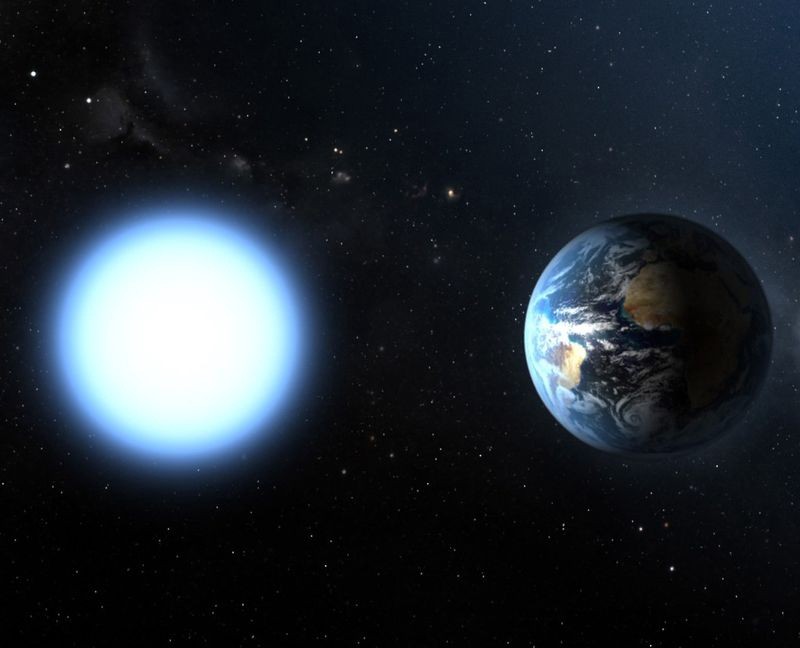
This pressure is due to the fact that quantum particles require more force to compress them than the gravitational force of the Sun can produce. But a star with a mass exceeding 400% of our mass will turn into a supernova, and its central region collapses, passing the atomic state, and further to the nucleus of pure neutrons! Instead of the size of the Earth, a neutron star of solar mass will be enclosed in a sphere several kilometers in diameter.
And although only a small fraction of the original star remains in the core, the mass of neutron stars varies from solar to as much as threefold solar mass. But for the masses beyond this limit, even neutrons lend themselves to gravitational force, and are compressed to sizes so small that light cannot escape from them. At this stage, we are moving from a neutron star to a black hole!
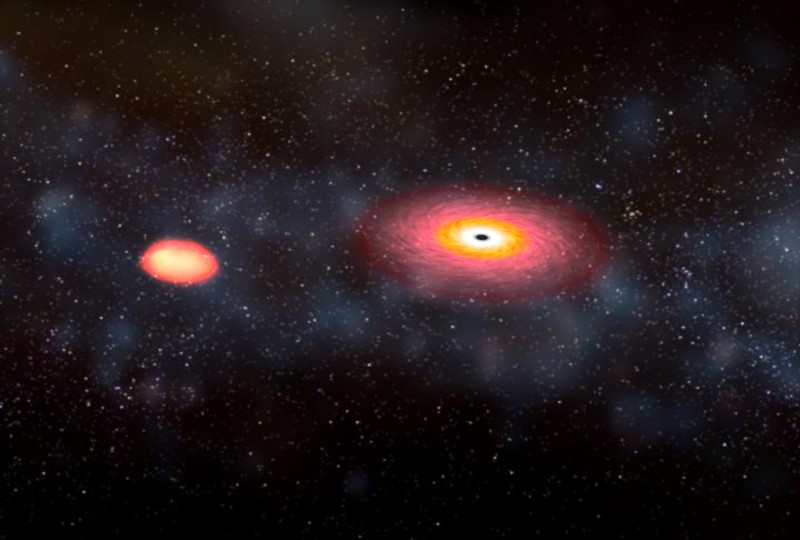
So which of the known black holes will be minimal? At the moment there are three candidates, and some of them are closer to victory than others.
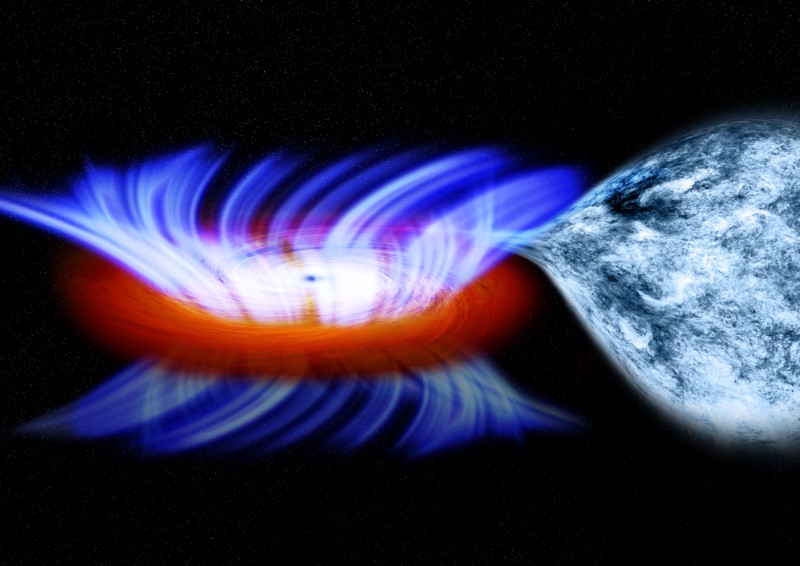
IGR J17091-3624: a black hole in a binary system that we can detect due to strong stellar winds created by a binary system. Instead of falling into a black hole, 95% of matter sucked from a companion star flies into interstellar space. This is actually a black hole of small mass, but the measurement accuracy gives us a spread from 3 to 10 solar masses.

GRO J0422 + 32: another shimmering binary system, located just 8000 light years from Earth, and estimates of its mass vary greatly. Some teams believe that this is a neutron star with a mass of only 2.2 times the solar one; others say that its mass is closer to the 4th solar, and one more - to 10 solar. There is no final decision yet, but if I had bet on the smallest known black holes, I would bet on this candidate.
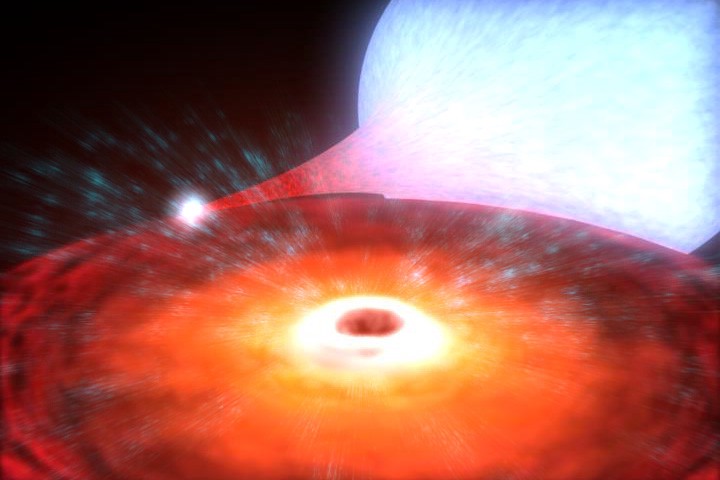
XTE J1650-500: it was initially announced that its mass is 3.8 solar, but since then the estimates have changed to 5 solar masses. This binary system emits X-rays from an accretion disk, and as we study objects of this class, we discover the connection between the emitted radiation and the mass of the black hole itself!
Wherever this boundary lies between a neutron star and a black hole - whether it is 2.5 or 2.7, or 3.0, or 3.2 solar masses - this is where, as you could reason, you need to look for minimal black holes . But there are three more possibilities that we can discover!

1) Merge neutron stars! This process leads to the appearance of very heavy elements in the Universe, such as gold, and it occurs as a result of the collision of two neutron stars. Neutron stars are much more common than black holes, and although their collisions are rare, they occur once in 10,000 - 100,000 years in the galaxy, if we recall that the universe is already more than 10 billion years old, and that it contains almost a trillion galaxies.
It is quite possible that if two neutron stars collide, even if their mass does not cross this limit for the formation of a black hole, a black hole will still appear as a result, with a mass smaller than that of those formed after the supernova explosion. So there is hope to find a black hole with a mass of slightly more than two solar in our galaxy, since it had to see from 100,000 to 1,000,000 such events!
Suppose you are not satisfied with the mass of black holes available and you want to make the black hole even smaller. Good news: you just have to wait!

2) Black holes lose mass over time! Since the nature of the universe is quantum, black holes are not static objects due to the constant appearance of particle-antiparticle fluctuations, occurring both inside and outside, and on the horizon of a black hole's events. And although this happens rather slowly, black holes evaporate through a process known as Hawking radiation.
At the same time, from a black hole there is not a stream of particles or antiparticles, but a very low-energy and almost constant radiation of a black body.

Over long periods of time, on the order of 10 68 or 10 69 years, the black holes of the smallest masses evaporate, losing their mass at first slowly, and then extremely quickly, evaporating the last several tons in a few microseconds.
So, if you want to get black holes of even smaller mass than they are now, just wait. Well, if you need them right now - I have bad news for you.

3) The universe could have been born with microscopic black holes, but it was not born. The idea of primitive black holes appeared in the 1970s, and it is in its own way brilliant. The universe was once in a hot, dense, uniform, and rapidly expanding state. If at that time any region would be only 68% denser than the average, it would automatically collapse into a black hole, and if you had many similar regions, we would get a universe filled with microscopic black holes.
But we measured the magnitude of density fluctuations in a very early Universe, and how it changes with scale - if you go down from the largest scale down to the smallest of the measured.

Instead of fluctuations in 68%, the usual fluctuations reached a power of only 0.003%, which is clearly not enough for the appearance of the Universe with at least one primeval black hole. Worse, if you go on ever-decreasing scales, it becomes almost unbelievable. If everything was different, the Universe would be filled with them; but it's just not our universe.
This is the story of the smallest black holes in the Universe, from those known to us that have not yet been found, to those whose appearance you just need to wait!
Source: https://habr.com/ru/post/396911/
All Articles